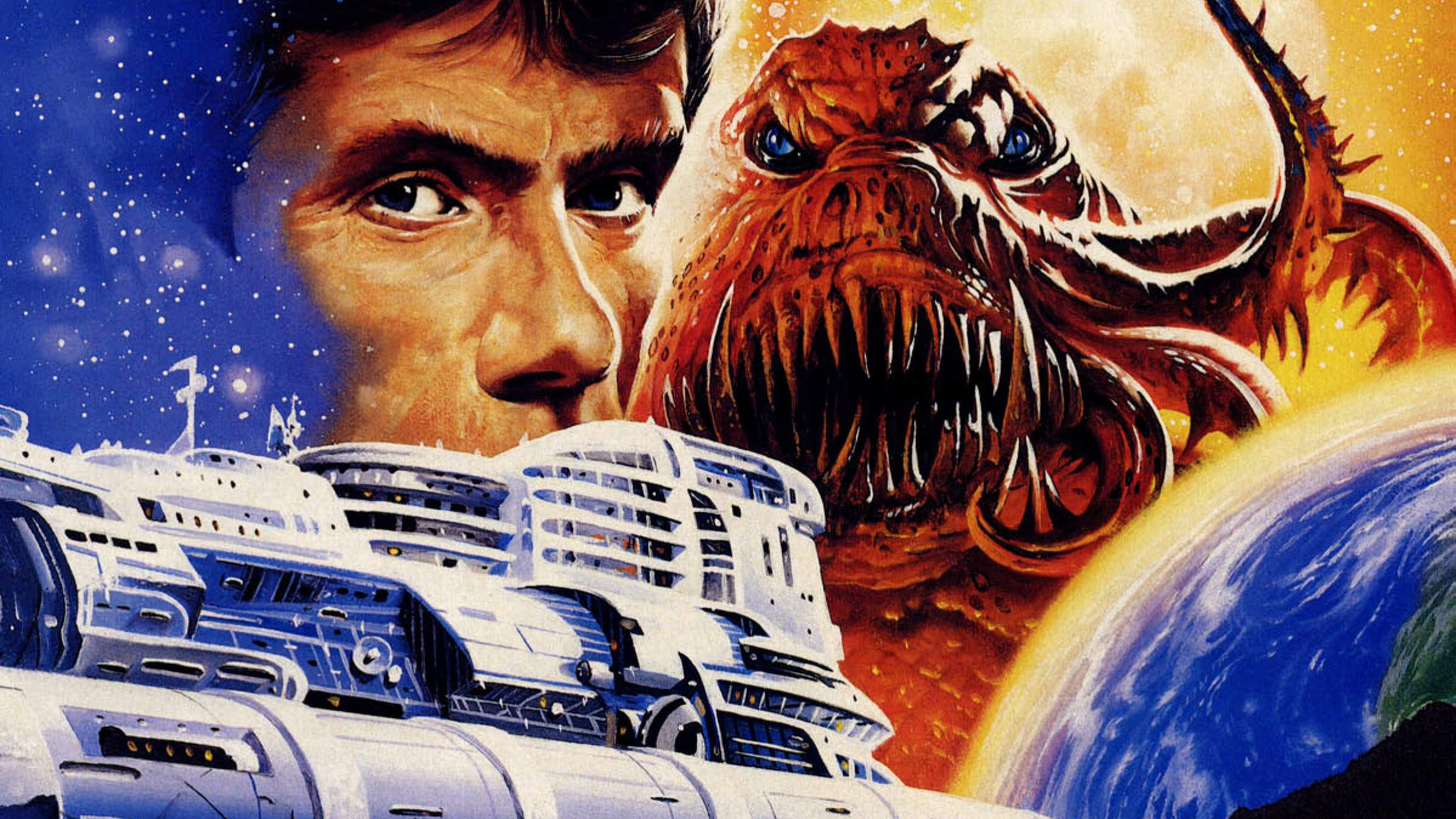6 games that had a huge impact on PC gaming, but are rarely celebrated today
The unsung trailblazers of PC gaming history.

For every entry on PC Gamer's list of the 50 most important PC games, there are a dozen other less-celebrated trailblazers that don't get as much love as The Secret of Monkey Island or Doom or Deus Ex. The genealogy of games has always fascinated me: Tracing back whole genres to their evolutionary roots, discovering where ideas become accepted, fell out of vogue or just forgotten. Why are survival games massively popular in the 2020s, when the survival games of the '90s have completely faded from memory? Why did it take so long for deckbuilders to become a hit genre, when Magic: the Gathering was doing it on PC 25 years ago?
Here’s a handful of games that—while seldom thought about nowadays—were hugely influential on PC gaming as we know it today.
Star Control 2
Released: November 1992
Developer: Toys For Bob
What it achieved: Charted the course for space adventures, but got lost in a legal neutral zone
The captain of an extraordinary starship assembles a crew of weird alien misfits on a quest to save the galaxy from an omnicidal precursor race. There’s planetside exploration, mining worlds for resources in a slightly-too-fiddly minigame, fully voiced multiple-choice dialogues with a reputation system, and even sexy blue alien ladies to romance. Sounds more than a bit like Mass Effect, doesn’t it? While the original Star Control got the ball rolling, the sequel gave us a template for space exploration and adventuring that hasn’t changed much in 30 years.
As for why it’s seldom mentioned nowadays, there’s a few reasons. Firstly, Star Control 3 (by a different studio) was a bit rubbish. Secondly, Stardock’s attempts to revive the series after acquiring the name were also underwhelming and legally disputed. Third, the version of the game available on Steam or GOG is the clunky DOS original. Thankfully better options exist in the form of an unofficial remaster (integrating the best bits from all versions) and its enhanced HD version, but they exist in vague legal limbo. It’s a space adventure worth going on, but it’ll take consulting some dusty old star-charts to get there.
Magic: The Gathering
Released: March 1997
Developer: MicroProse Software
What it achieved: It ran before deckbuilders learned to even crawl
Deckbuilding games are truly inescapable these days. There’s dozens of them due out this year alone, but back in 1997, the options were a bit more limited. Without so much as a subtitle, the 1997 PC adaptation of Magic: The Gathering was a revelation. Not only was it an excellent adaptation of the ascendant CCG, but it had a mind-bendingly expansive campaign mode named Shandalar, unprecedented for its time. Part open world RPG, part Heroes Of Might & Magic, all card battling. As a roaming sorcerer, you traveled around a huge map, fighting monsters in dungeons, challenging rival sorcerer-lords and buying and selling cards in towns.
Keep up to date with the most important stories and the best deals, as picked by the PC Gamer team.
The reason it’s obscure now is largely because there’s no legal way to get hold of it beyond trawling Ebay for second-hand copies, and playing it on modern machines is a bit of a struggle. There are some fan-made efforts to create an unofficial successor to the Shandalar campaign, but nothing has fully borne fruit yet. Given that the fans are operating unlicensed and under the baleful eye of Sauron Hasbro, it’s probably best that I not link to anything until everything is done, dusted and released to the public.
Kill.switch
Released: October 2003
Developer: Bohemia Interactive
What it achieved: It gave us the cover-shooter genre, then kept its head down
While the cover shooter has fallen out of vogue recently (I’m still waiting for the official announcement of Gears 6), it was one of the dominant forces in videogames for a good long while. Gears of War was the first major hit in the genre, but Namco’s Kill.switch predated it and was the first to really clarify that bombastic military action style. It introduced blind-firing (not so useful in real life, much more effective with a third-person camera) to the mix, completing the formula as we know it now. While a little raw and unrefined nowadays, it’s not hard to see Kill.switch’s influence.
This one faded from memory pretty quickly, largely in part because the game was, well, kinda mid. Without the visual hooks of Gears of War’s gigantic sassy muscle men and subterranean monsters, it was mostly just grey-brown military generica, and a very short and easy game to boot. It also came to the PC late, although interestingly was ported to Windows by The Bitmap Brothers, another influential studio largely forgotten these days.
Painkiller
Released: April 2004
Developer: People Can Fly
What it achieved: It carved out a hell-grinding FPS niche that has only grown
Circa 2004, the prevailing wisdom in gaming was that gritty and grounded was the way forward—see Kill.switch above. Even Doom had reinvented itself as a slower, more cinematic horror-adjacent experience. Painkiller felt like a rebuttal to this new trend—a loud, fast Gun Dude Versus Hell arcade shooter inspired by the classics of the '90s but not entirely beholden to them. It’s what the kids these days would call a ‘boomer shooter’, but before we had such (inaccurate) terminology, it was just plain old school, moreso even than the Serious Sam series.
Painkiller didn’t remain the uncontested ruler of its particular niche for long. Other rivals came and went, and attempts to recapture its relevance fell flat. Two sequels, Painkiller: Overdose and Painkiller: Resurrection just didn’t live up to the original, and were widely panned by critics. 2013’s Hell & Damnation (HD, get it?) was a decent remake of the original’s best levels, but bafflingly relegating many of its best levels to DLC made it a hard sell at the time. By then the retro FPS revival was in full swing, and there wasn’t much reason to return to Painkiller. The Doom mod scene has even stripped it for parts in the form of the (excellent) gameplay mod Painslayer.
Wing Commander Privateer
Released: September 1993
Developer: Origin Systems
What it achieved: Defining the space trading-and-shooting genre as we know it
If you grew up through the '70s or '80s, chances are you wanted to be Han Solo at some point. A roguish space captain, smuggler, hero and troublemaker. Hauling (sometimes illicit) goods and getting into dogfights with pirates on almost every trip. There’s a long history of games delivering on this dream (including the still-active Elite series), but it was Wing Commander: Privateer that defined the form, bringing that cinematic, Hollywood-esque vibe to an otherwise dry sim style. With face-to-face dialogues, sketchy characters to meet and combat lifted straight from the mainline Wing Commander games, Privateer was the template to follow.
Despite being easily accessible on GOG, Privateer is less talked about now simply because it was so thoroughly supplanted by its successors. Egosoft’s X franchise, the Freelancer series, modern takes like Everspace 2, even its own direct successor, the absurdly-budgeted Star Citizen. Still, there are some that hold a torch for Privateer’s specific charms. The underrated Rebel Galaxy Outlaw is so visually and mechanically similar that it could pass for an unofficial reboot. It makes a lot of quality-of-life improvements while still retaining some of its interesting quirks, like its charmingly, intrusively bulky ship cockpits.
Robinson’s Requiem
Released: 1994
Developer: Silmarils
What it achieved: It laid the ground for the grueling survival sandbox genre
Modern survival games are for weaklings. Managing hunger and hydration gauges? Easy. Back in my day, we had to decipher a bafflingly complex medical interface after every fight. First diagnosing what terrible injury we’d suffered, then cleaning, disinfecting and wrapping individual wounds or even performing gruesome field surgery. Robinson’s Requiem (and more polished sequel Deus) were some of the first big hits in the survival sandbox genre, and went harder and further than almost any of their modern contemporaries. French studio Silmarils never seemed content to do what other games were doing.
As for why Robinson’s Requiem and its sequel are so rarely mentioned these days, I feel they were just too far ahead of their time—and possibly a bit too extreme on the simulation front. As you can see in the video above, there are a comical number of ways to die. Clearly there was an audience for grueling survival sandbox games (if there wasn’t, Robinson's Requiem wouldn’t have gotten a sequel), but the concept wasn’t quite ready to go mainstream yet. The world definitely couldn't have handled SCUM in 1994. The Robinson games are very hard to approach now, thanks to their brutal learning curves and extremely clunky interfaces, and sadly they're not popular enough to inspire fans to unofficially remaster or remake them.

The product of a wasted youth, wasted prime and getting into wasted middle age, Dominic Tarason is a freelance writer, occasional indie PR guy and professional techno-hermit seen in many strange corners of the internet and seldom in reality. Based deep in the Welsh hinterlands where no food delivery dares to go, videogames provide a gritty, realistic escape from the idyllic views and fresh country air. If you're looking for something new and potentially very weird to play, feel free to poke him on Bluesky. He's almost sociable, most of the time.

